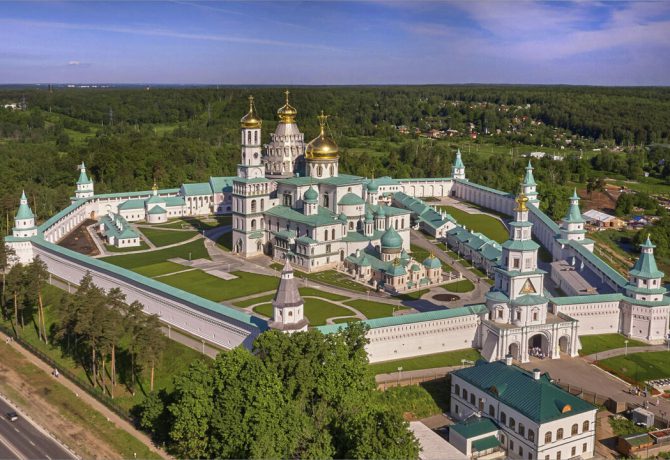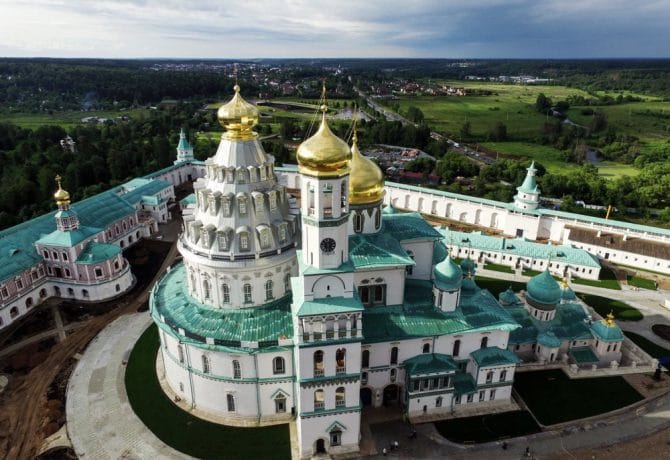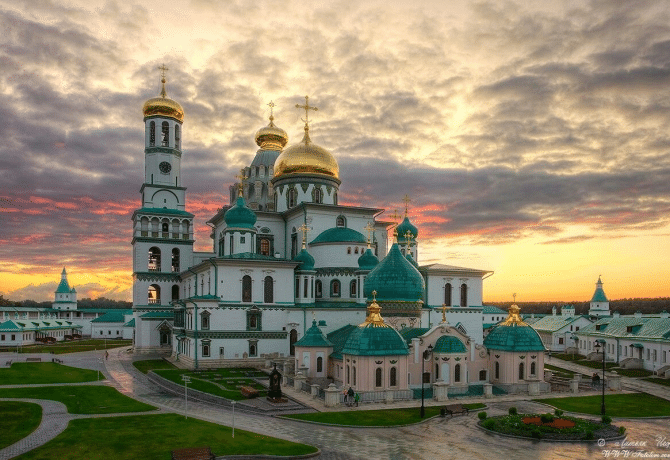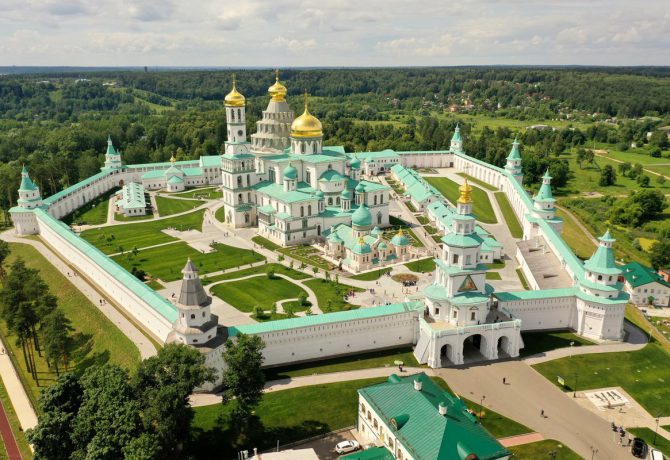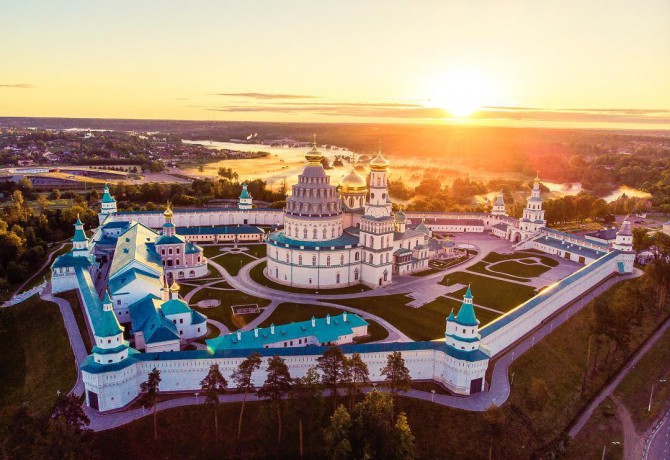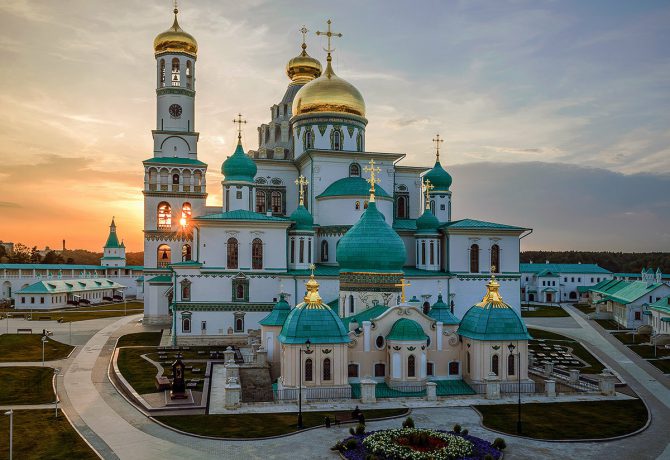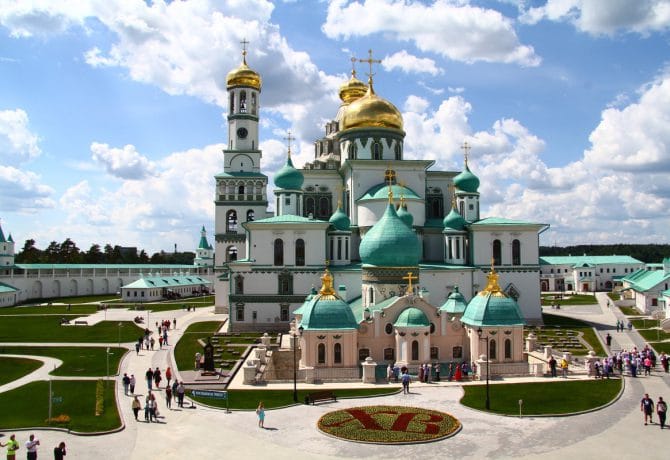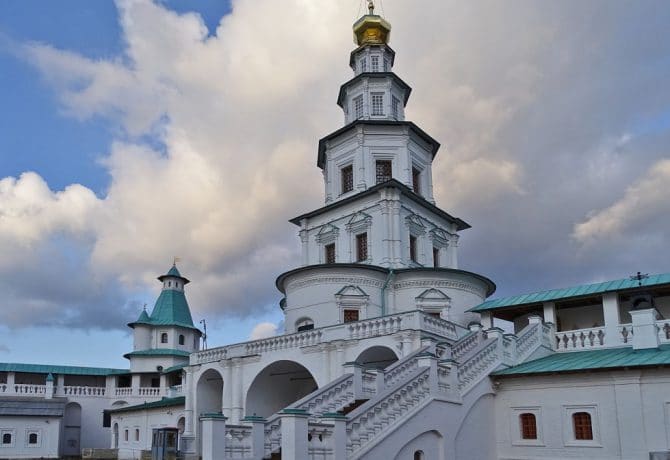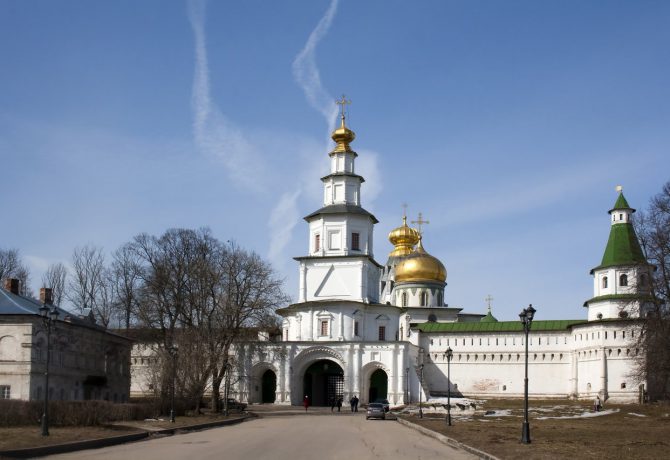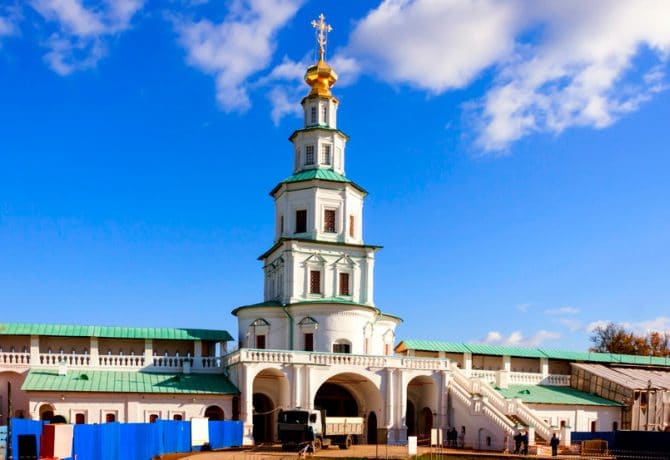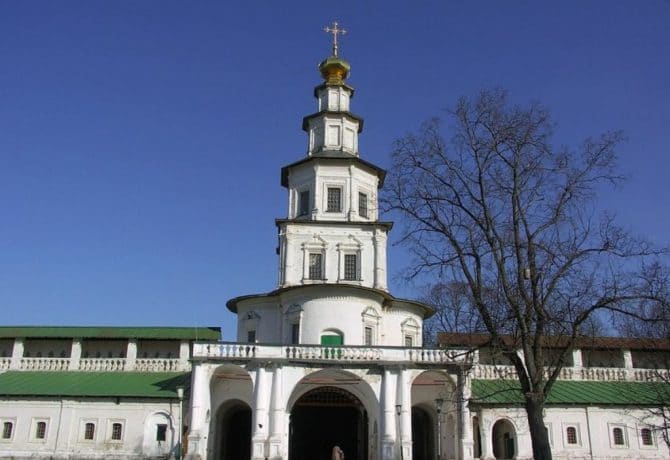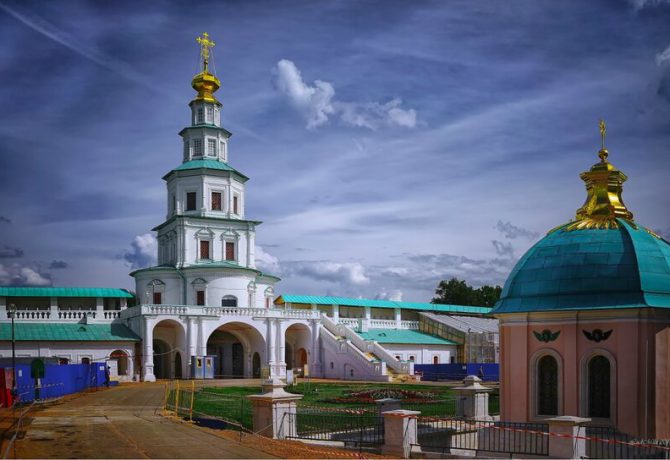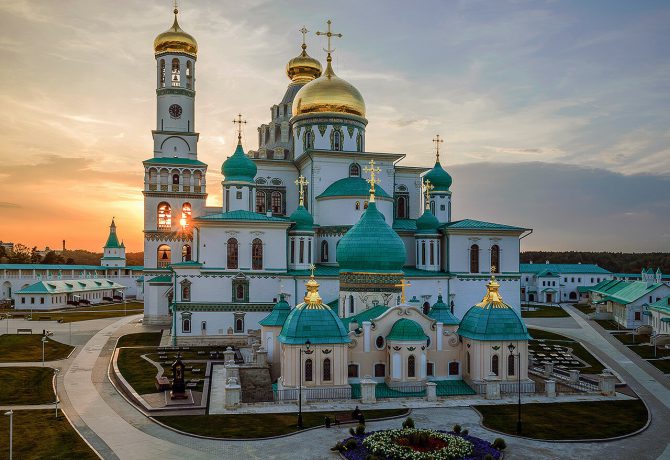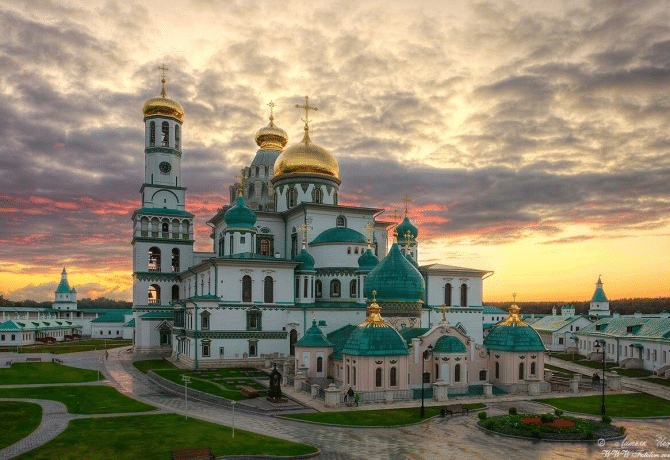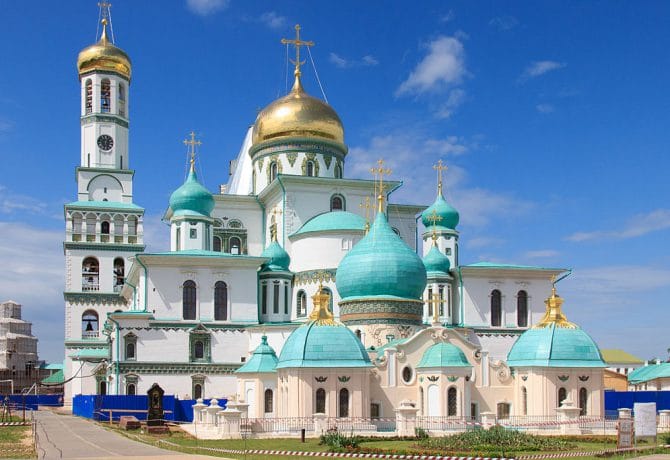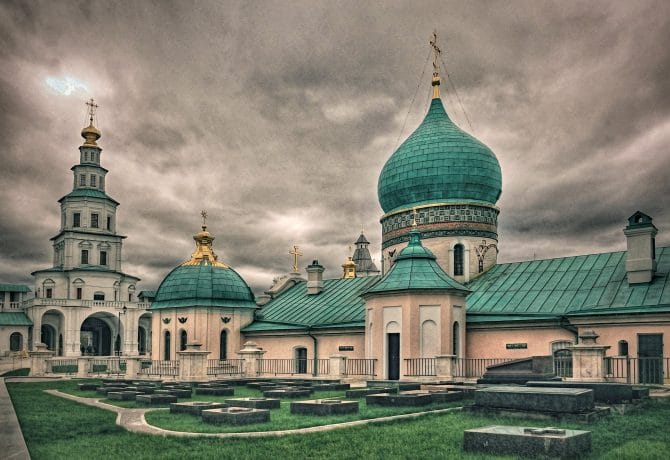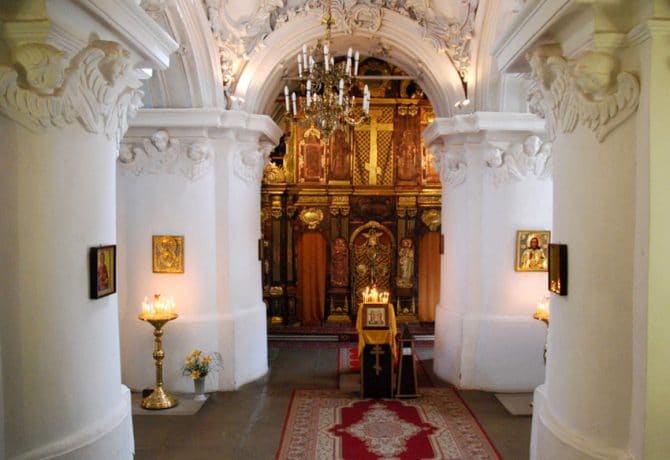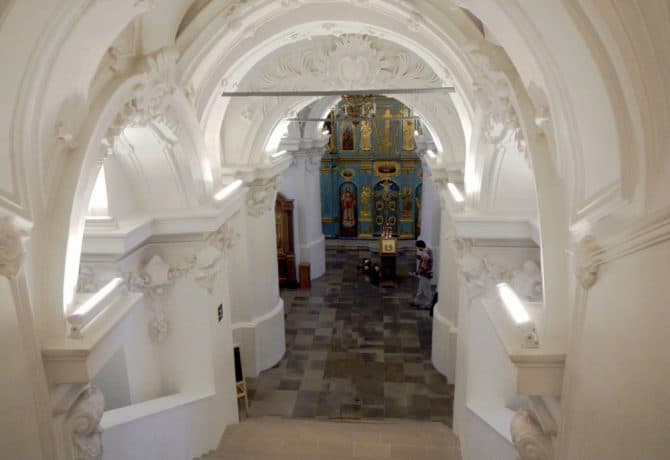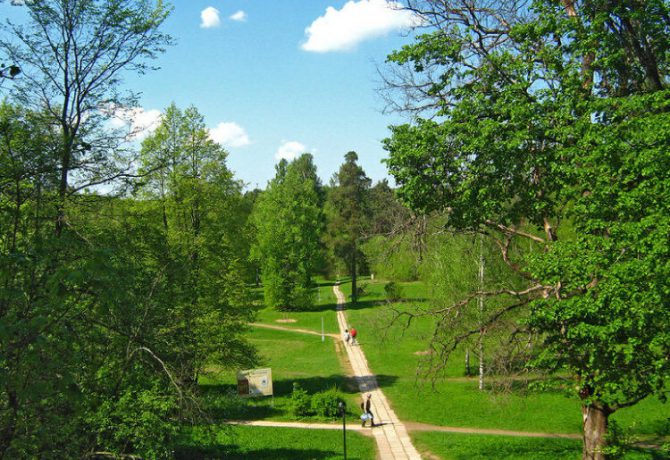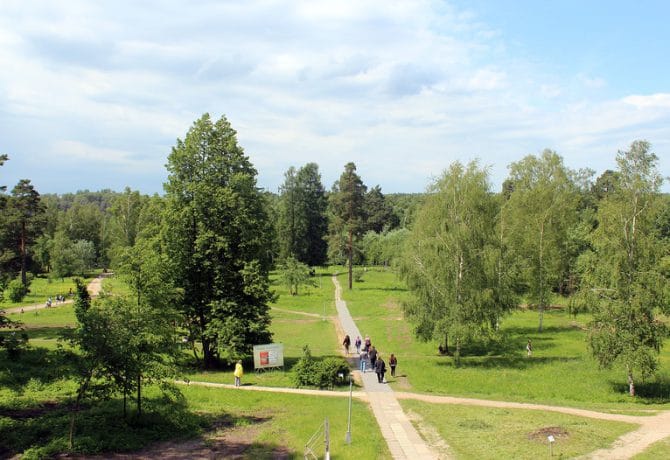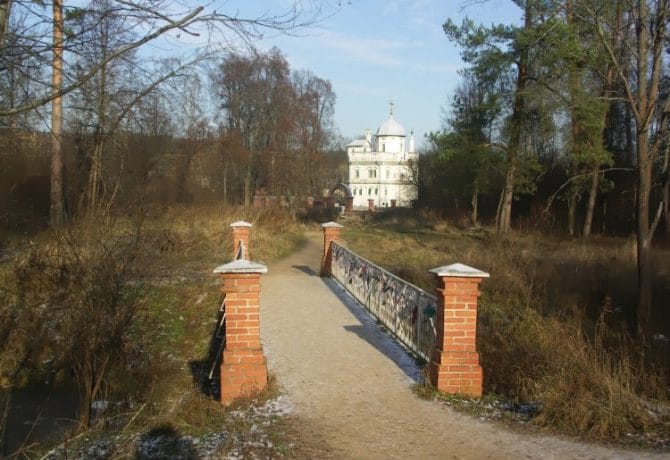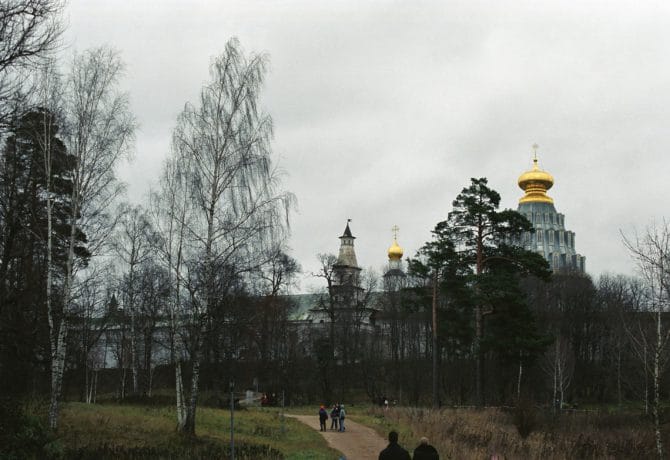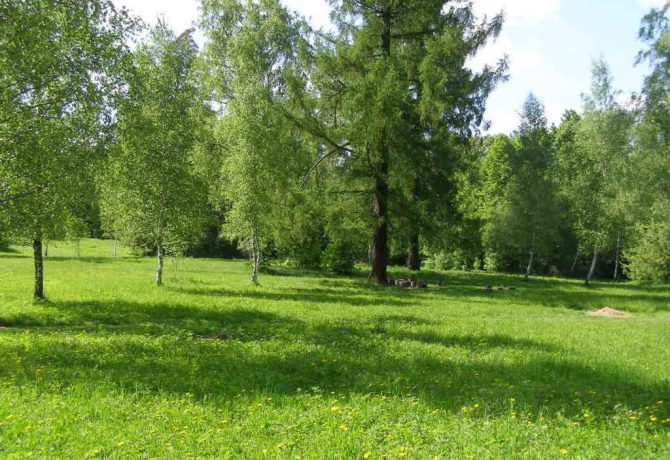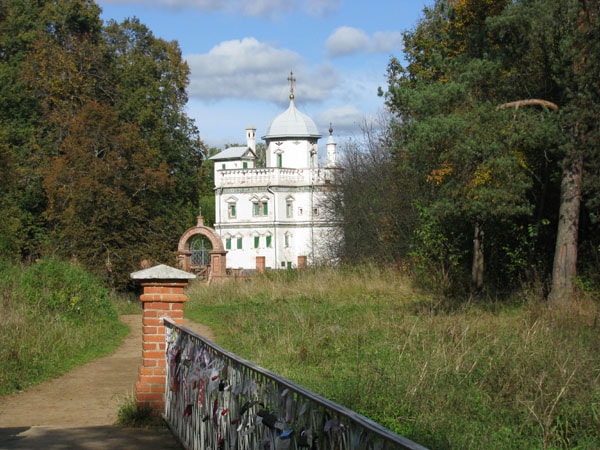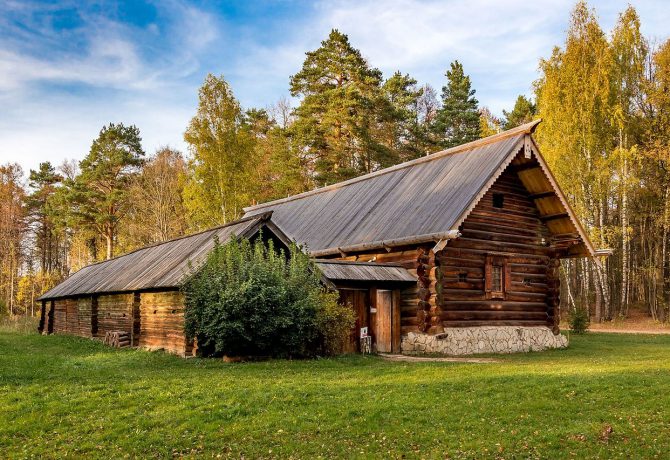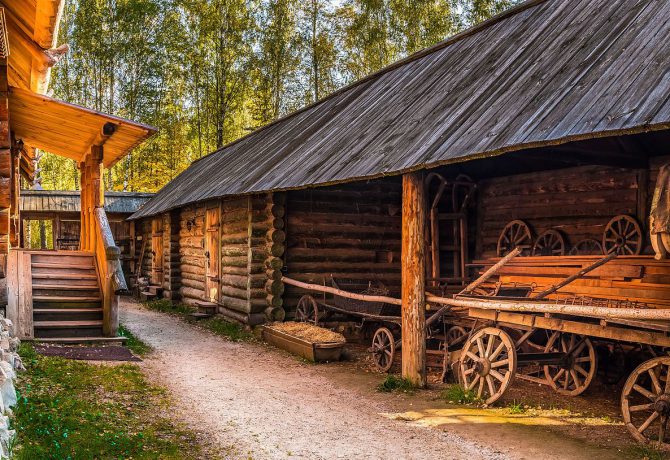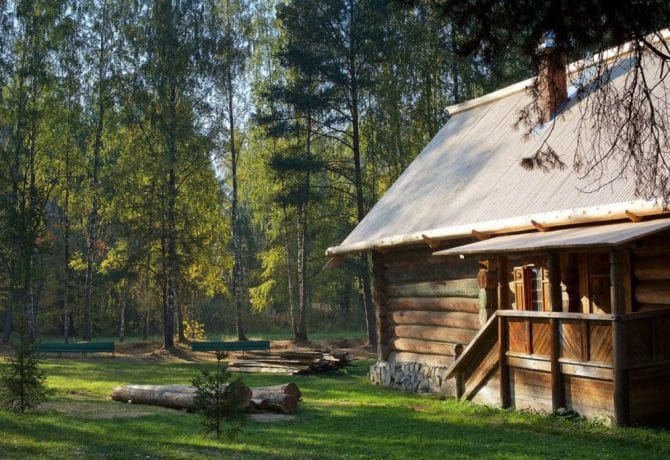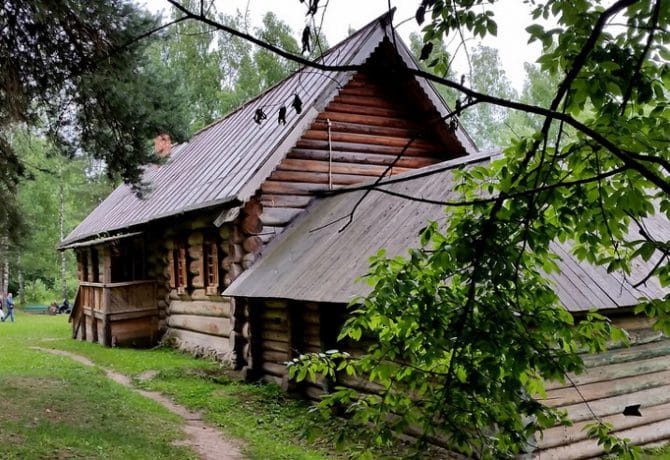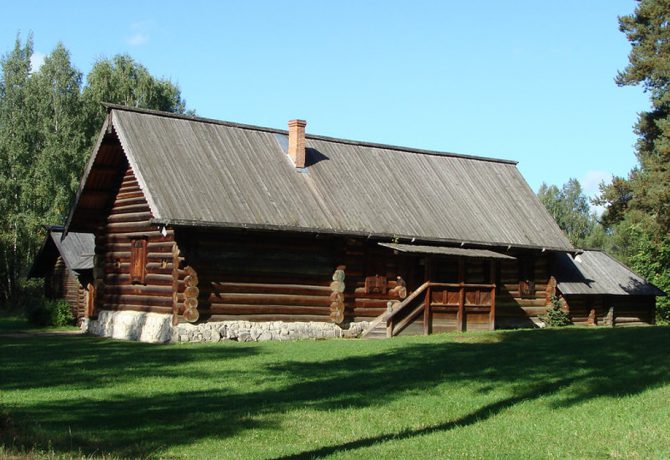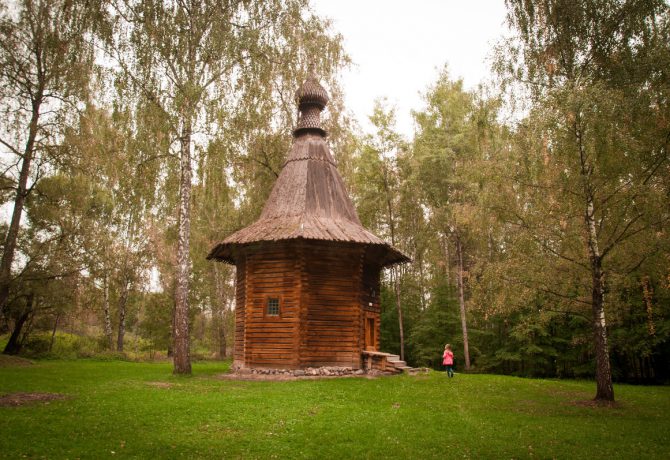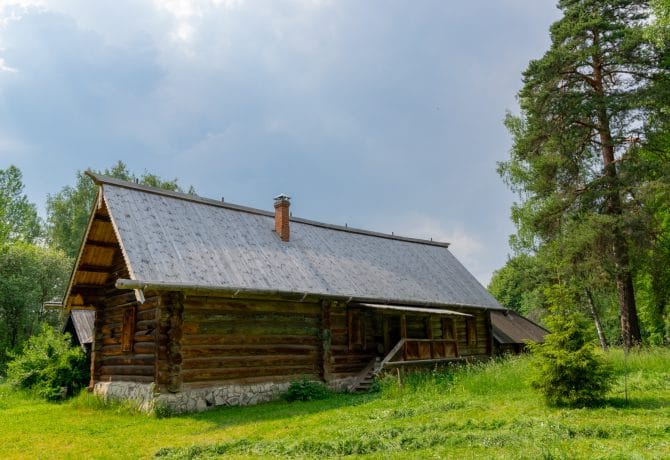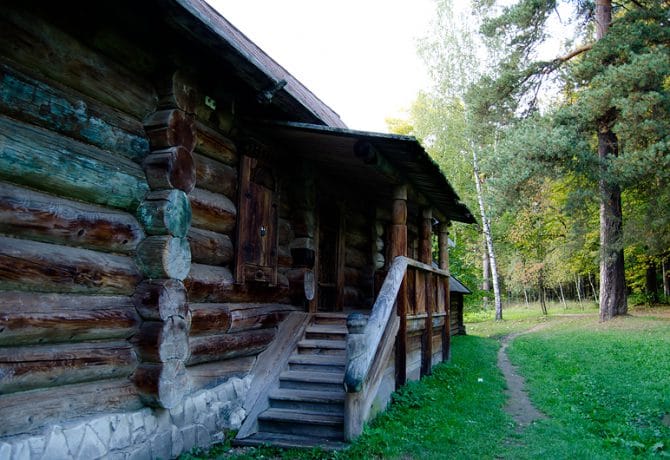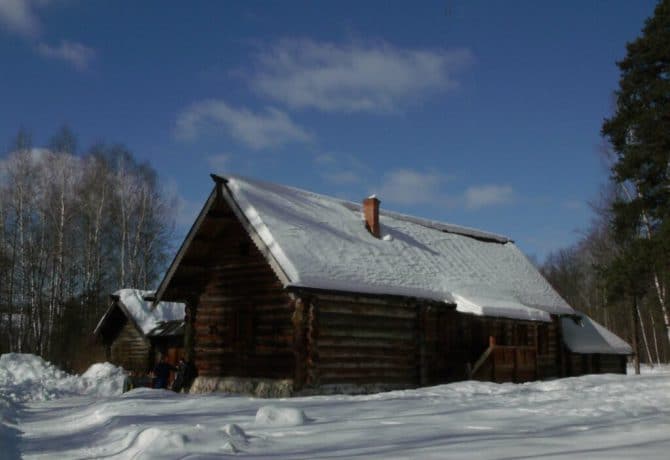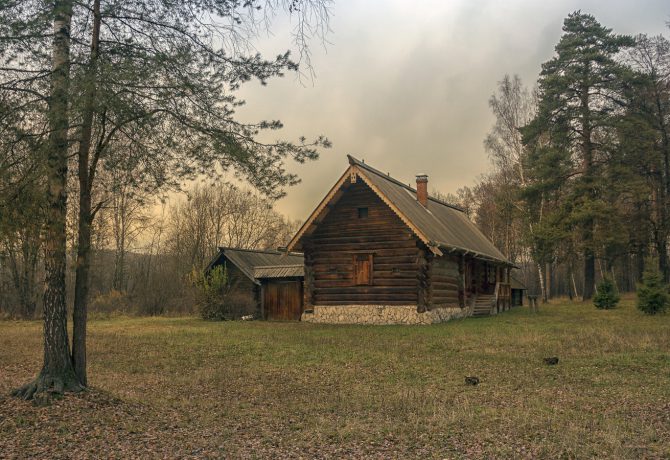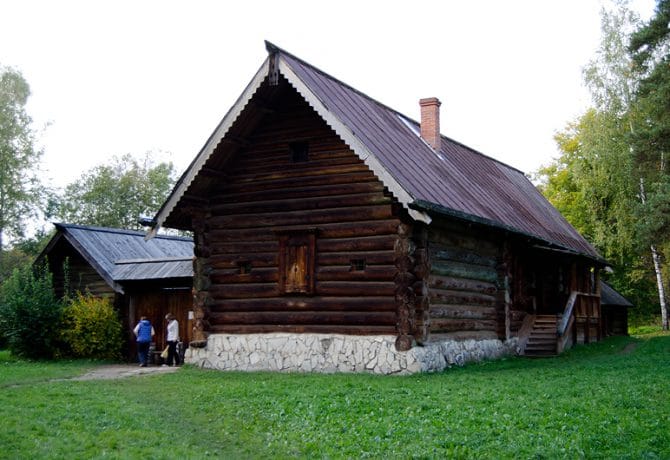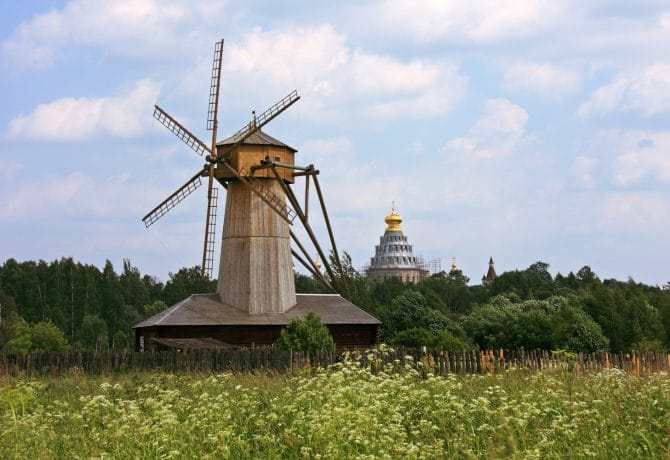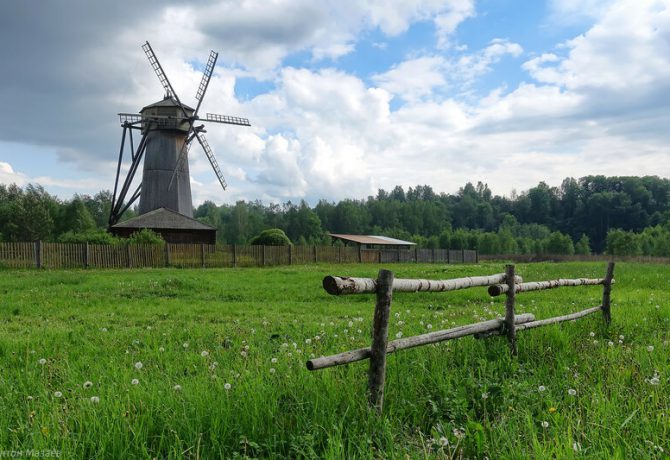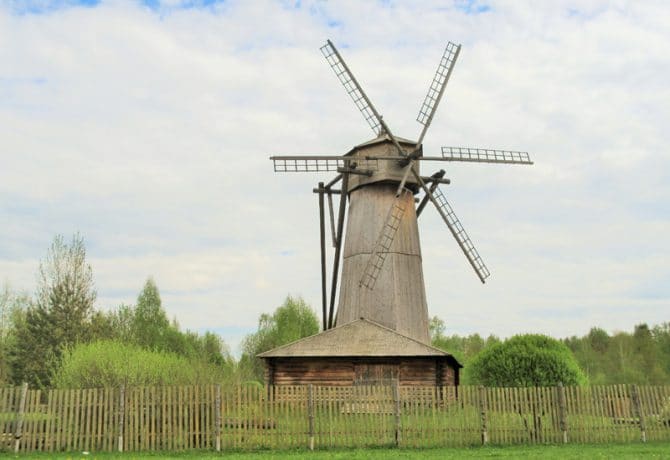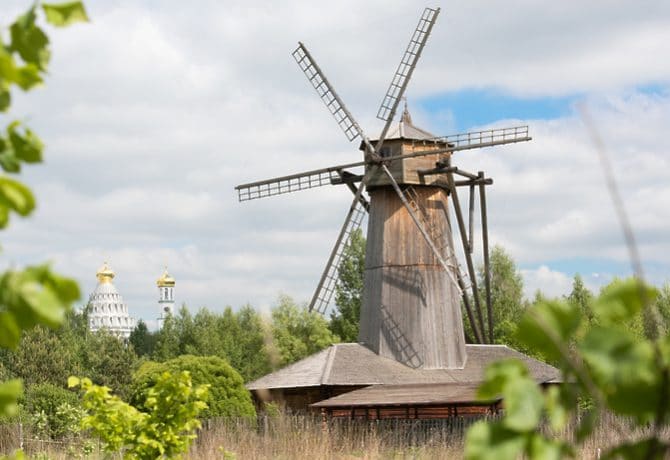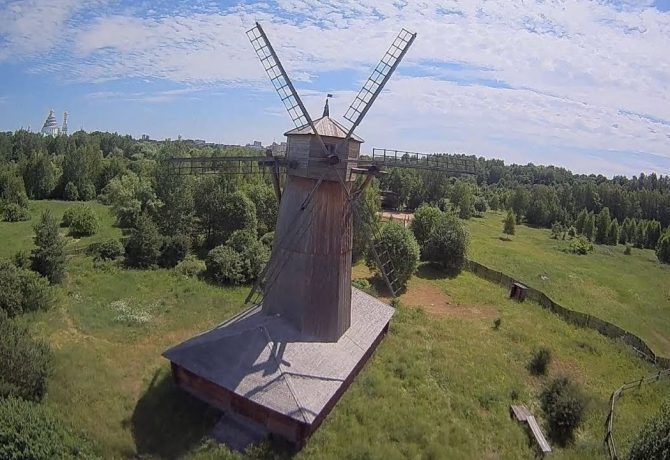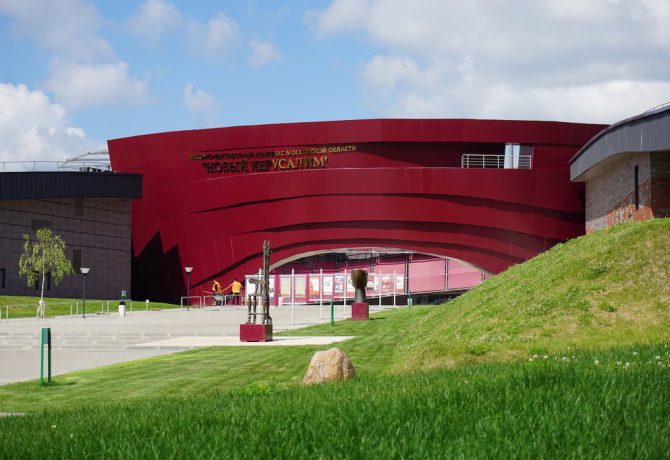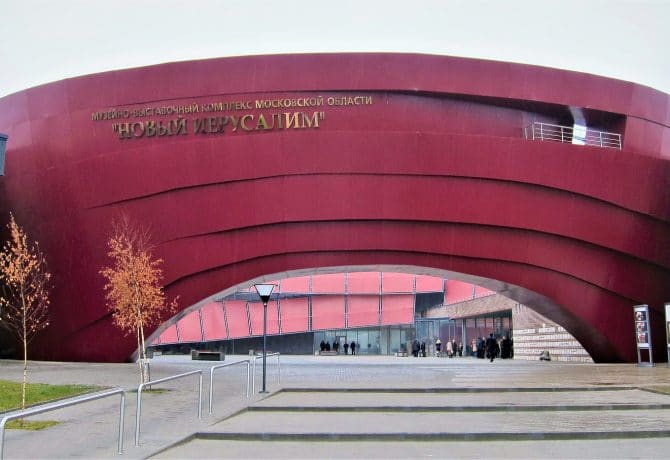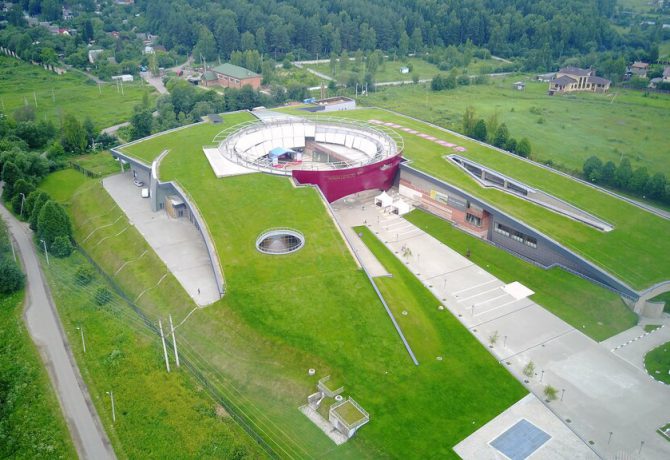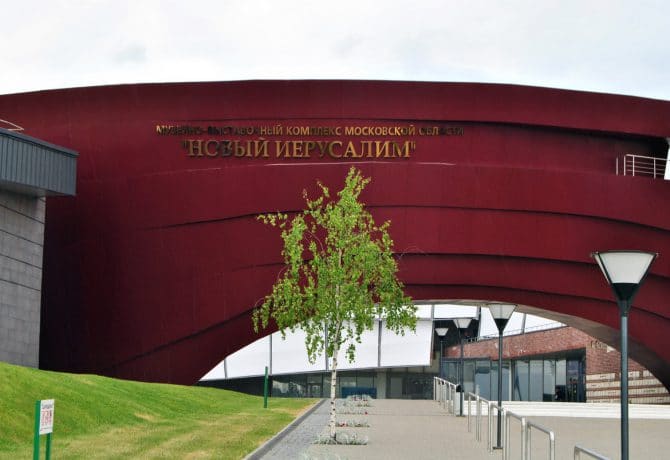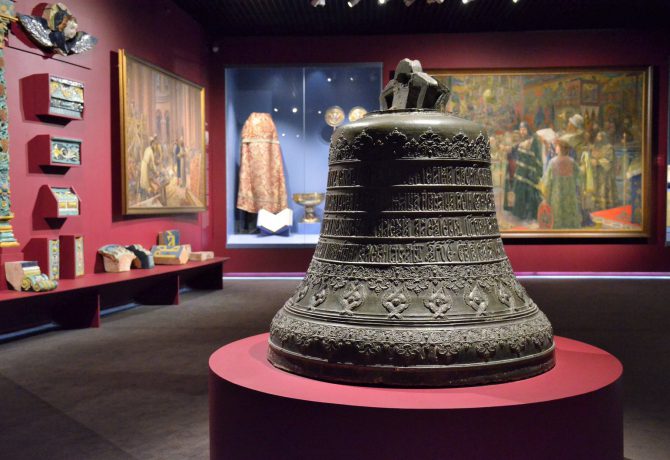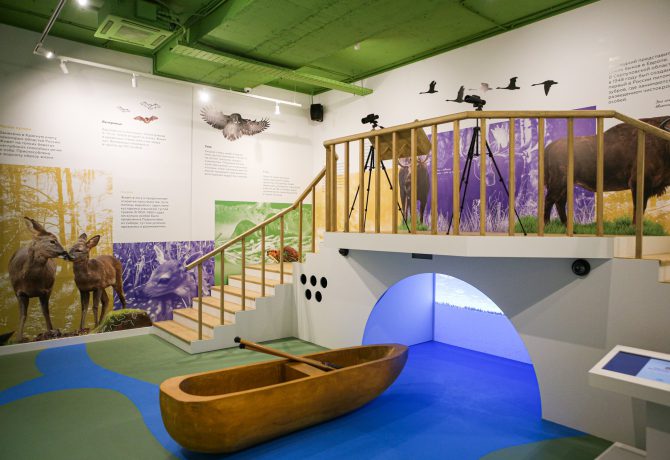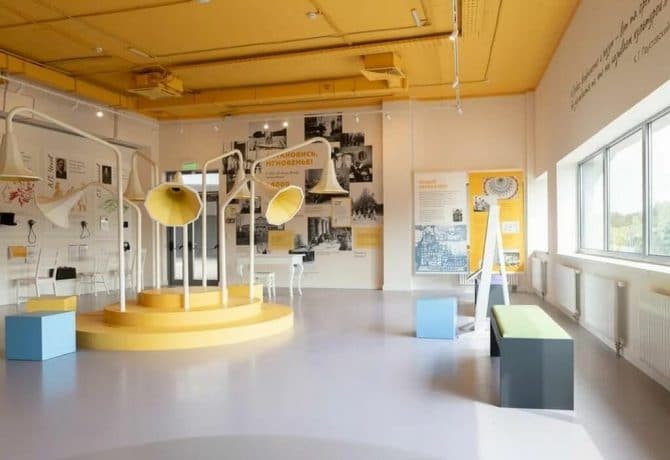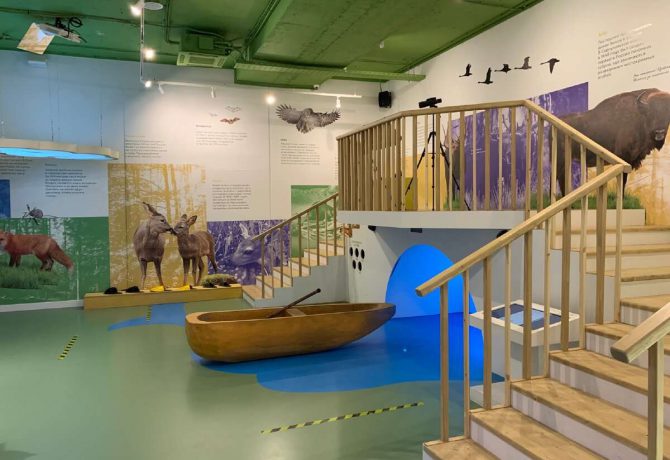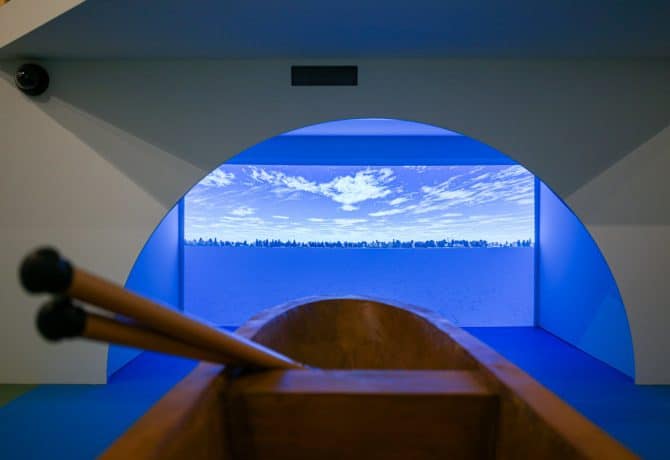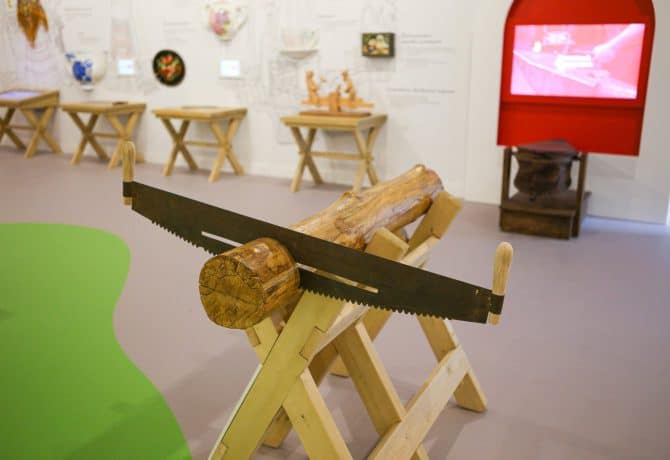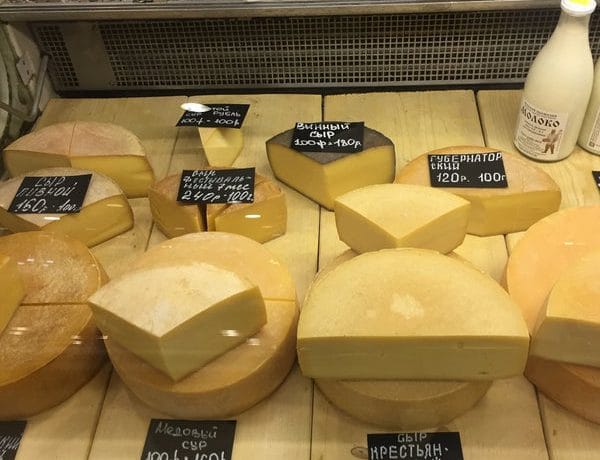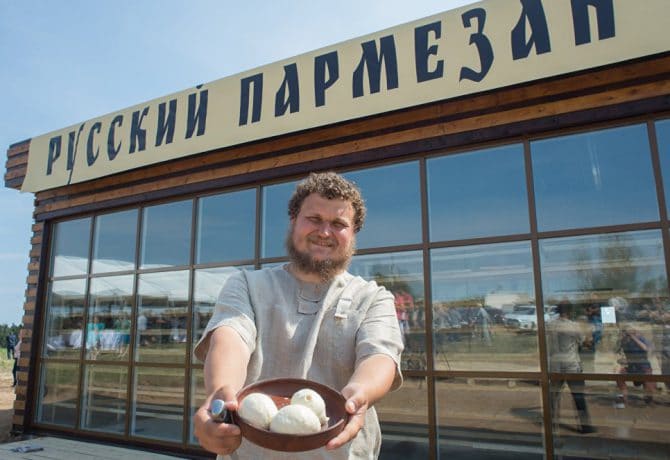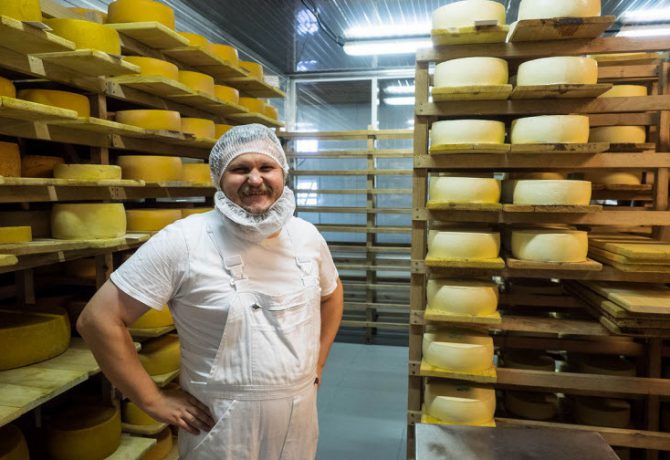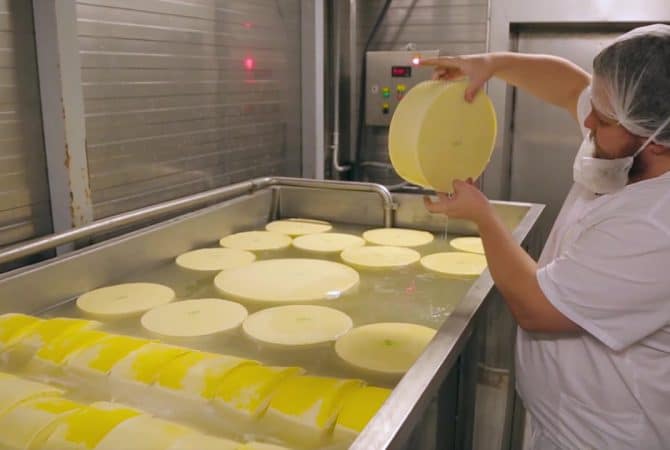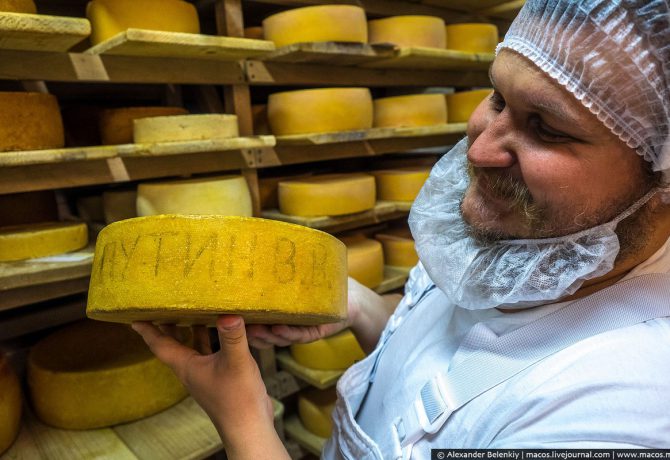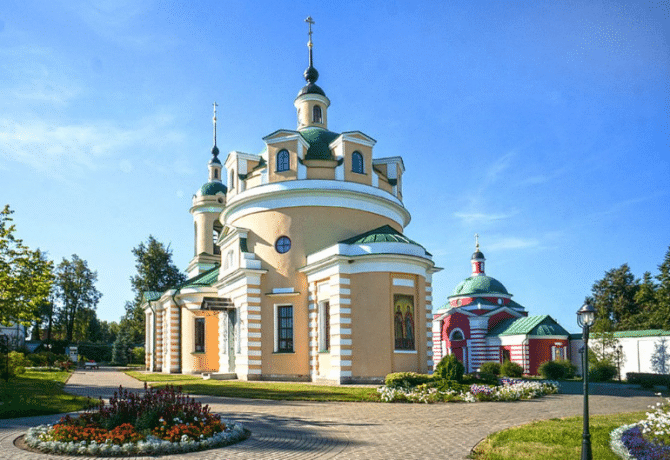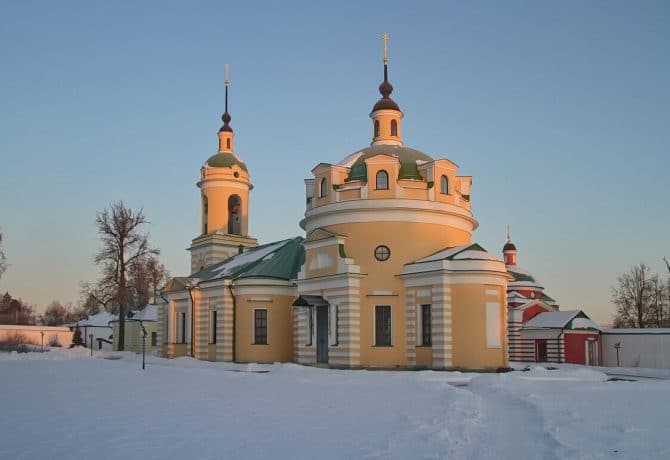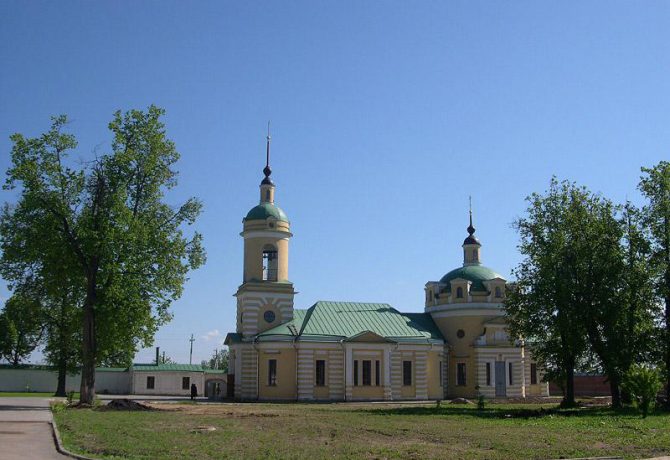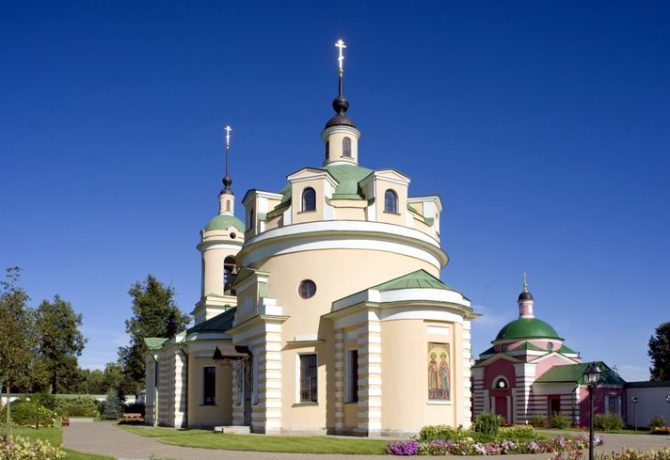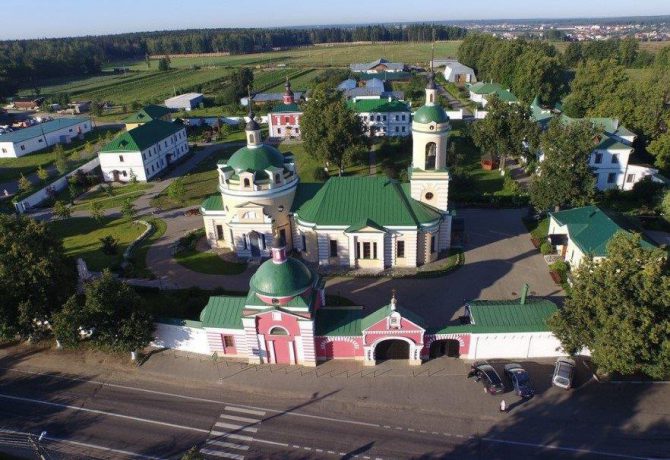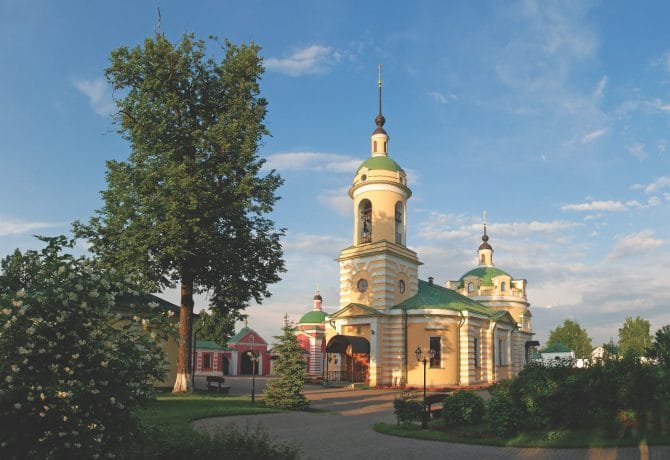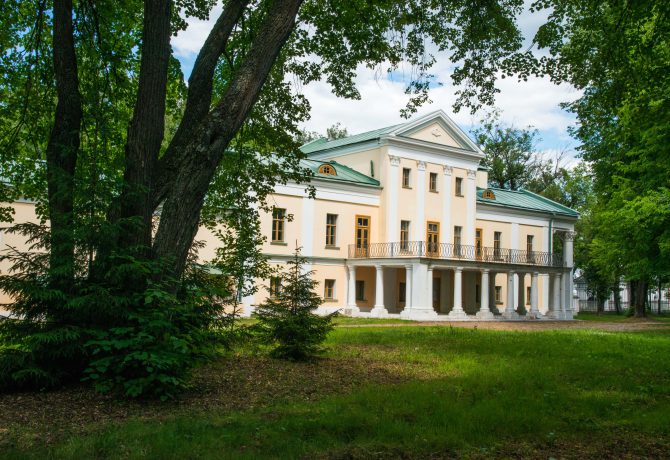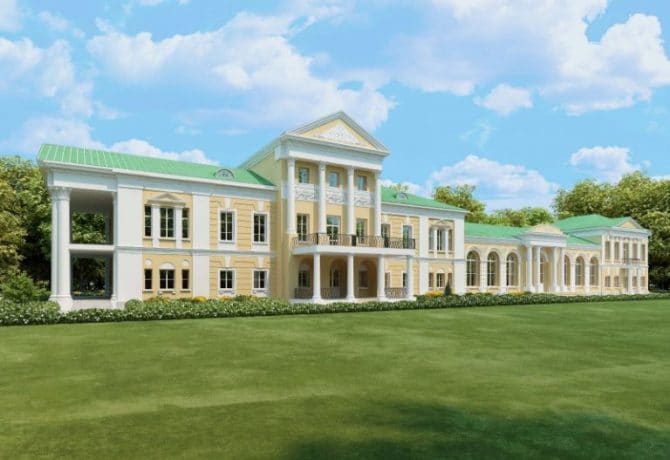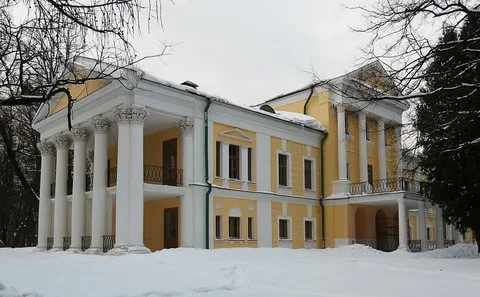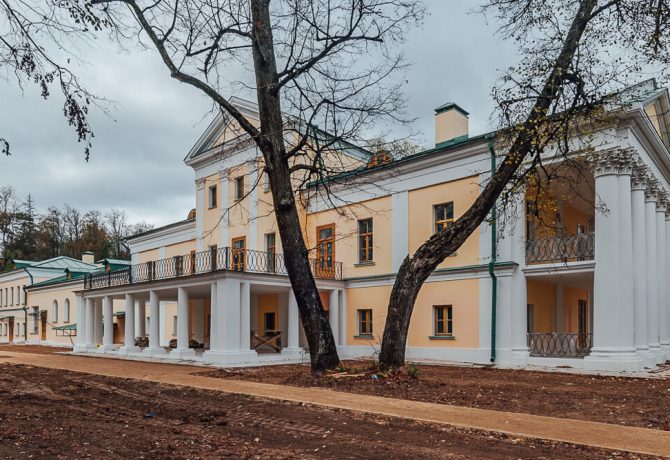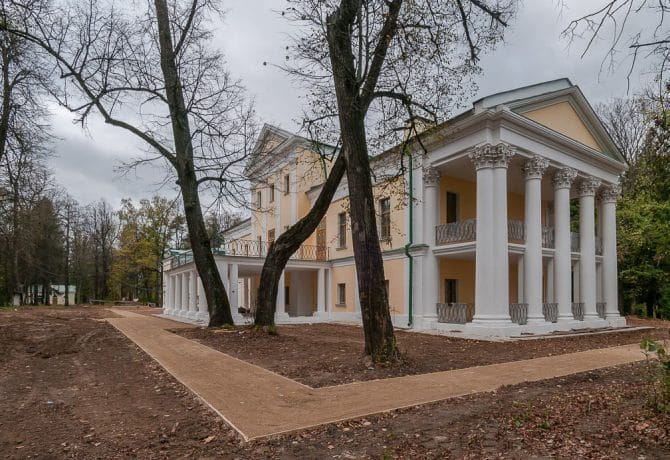Istra is known for its well-groomed, beautiful landscaping and numerous attractions, of which the first is the restored ensemble of the New Jerusalem Monastery. In the city itself, mostly buildings and residential buildings of the Soviet era in the style of stalin’s Empire or faceless typical high-rise buildings have been preserved. Most of the buildings of the pre-revolutionary era were destroyed during the war, but in some places old estates and houses are still preserved. There are monuments in the city: V.I. Lenin, Leonardo Da Vinci, unknown Plumber and A.P. Chekhov, who lived here for a while.
There is also a monument to St. Martin, donated to Istra from the residents of the sister city of Bad Orb in Germany. The author of the composition is a Russian sculptor, a resident of Istra Sergey Kazankov. The same monument stands in the German city, only with the difference that the Istra twin residents broke off the leg of the horse on which St. Martin sits, several times threw it off the pedestal and poured paint.
Also in the city there are many military monuments and squares, since during the Second World War the fiercest battles took place in the western direction. You can get here by car along the Novorizhskoye highway, by train to the station “Istra”, and closer to the monastery – to the next station “Novojerusalimskaya”. Drive from Moscow about an hour. Some of the attractions that are worth visiting are located outside the city, so it is better to come here by car.
The western part of the Moscow region is known for the fact that due to the peculiarities of the wind rose and the lack of large industrial facilities, the situation with the environmental situation is much better here. In the 19th century, these places were owned by aristocrats and artists, in the Soviet period – the political leadership, and in our time the area is actively built up with elite cottage settlements and residential complexes. The city of Istra got its name in 1930, and before that it was called Voskresensk. Renamed with the expectation not to be confused with another Voskresensky, which is located in the east of the Moscow region. The distance from Moscow is slightly less than 70 km.
- 1 New Jerusalem Monastery
- 2 Gate Church
- 3 Resurrection Cathedral
- 4 Church of Constantine and Helena
- 5 Garden of Gethsemane
- 6 Museum of Wooden Architecture
- 7 Kokorins’ hut
- 8 Mill
- 9 New Jerusalem Museum
- 10 Exponarian
- 11 Istra cheese factory of Oleg Sirota
- 12 Borisoglebsky Anosin Convent
- 13 Estate Pokrovskoe-Rubtsovo
- 14 Attractions Istra on map
New Jerusalem Monastery
The ensemble of monastic buildings with the Cathedral of the Resurrection of Christ is one of the largest and most beautiful monuments of church architecture and art of the 17th century. The monastery was built at the personal insistence and participation of Patriarch Nikon, who is known for large-scale transformations and schism in the Russian Orthodox Church, which served as the beginning of the bloody persecution of the Old Believers. The central cathedral in appearance repeats the size and architecture of the Church of the Holy Sepulchre in Jerusalem, inside it also has a copy of the Edicule, Calvary and the Stone of Anointing.
The size and splendor of the New Jerusalem Cathedral are striking in our time, and in the 17th century they became a real miracle of engineering. Attempts to recreate the Jerusalem temple were made repeatedly, but the monastery near Istra is the only result that has survived more than one restoration. Of course, the place enjoyed reverence among the pilgrims, and the commander Alexander Suvorov was even able to ensure that his wife and son were buried in the necropolis on the territory of the monastery. After the war of 1941-45, the complex of buildings was in dilapidated and disrepair condition, but already in Soviet times there was a large-scale restoration, which returned the original appearance of the 17th century. Inside, tourists are greeted by beautiful interiors with stucco, paintings and icons. There is a refectory and a dumpling room on site. Parking is arranged for drivers, minibuses go to the monastery, you can also walk on foot.
Address: Sovetskaya str., 2
Gate Church
A separate point of visiting the monastery complex should be considered the gate church, built at the end of the 17th century simultaneously with the impressive fortress wall. It is the gate church that meets tourists who come to visit this holy place. The architectural appearance of the temple building is an octagon on a quadrangle, crowned with a one-headed dome. Climbing the parapet of the stone fence, you can admire both the panorama of the monastery and the wonderful views of the park area.
Resurrection Cathedral
The start of construction was given by Nikon himself, to whom the Jerusalem temple seemed too simple and poor. The ambitious and proud patriarch decided to surpass the original with the scale and splendor of the interior decoration, decorating the new cathedral in his taste. For construction and finishing works the best masters from all over Russia were written. But to see the completed plan failed neither disgraced Nikon, nor Tsar Alexei Mikhailovich, nor even his successor Fyodor Alekseevich. This “great stone church” was consecrated already under the young Peter and the regent Sophia in 1685.
Church of Constantine and Helena
Queen Helena is known not only as the mother of Emperor Constantine, who stopped persecution and planted the Christian faith in the rank of dominant in the Roman Empire. She also organized a search for the Cross of the Lord in Palestine, where they eventually dug out of the ground the Cross, on which Christ was crucified. Therefore, it was decided to make the church in the name of Saints Constantine and Helena underground, so that it would be symbolic. From the entrance down the descent goes along 33 steps – according to the number of years of the life of Christ the Savior. Inside is very spiritual and unusual, the temple is located 6 meters below ground level.
Garden of Gethsemane
It was in this garden, according to the text of the Gospel, that the kiss of Judas the traitor and his Master took place, after which he was captured by the soldiers and taken to the judgment of the high priest of Judah. Therefore, the nearest park area, adjacent directly to the ensemble of the monastery, was called the “Garden of Gethsemane”. In the depths of the park area was the skete of Patriarch Nikon, which is now partially recreated. Here in the summer it is good to walk in silence, enjoying the fresh park air. Next to the skete of Nikon flows the river Istra, in which bridges with a font are arranged. In summer, they bathe and refresh here, and in winter on the feast of Epiphany, they cut an ice hole and plunge three times.
Olga writes a review: “After the restoration, the most enthusiastic impressions of the beauty and splendor of this place remain. We took a guided tour: very informative and interesting. Descending 33 steps down, you find yourself in a dungeon near the Holy Spring, in which you can collect water. I also liked that you can walk along the walls and enjoy the beautiful scenery. On the territory sell delicious pies and pastries, there are several cafes. Wonderful place!”
Museum of Wooden Architecture
If you walk along the monastery walls on a wooden deck, then through the Garden of Gethsemane you can get into the “museum of wooden architecture”. In fact, this is a complex of several buildings that have survived since tsarist times. There is nothing special to look at here, except to fantasize about the difficulties of the peasant life of our ancestors.
Kokorins’ hut
This is an old wooden house in three rooms, transported here from the south-east of Moscow. The size of the hut is not small, an authentic atmosphere is preserved inside. Organically inscribed a large wood stove, separately made a bright room, in the upper room there is an antediluvian loom, a red corner with icons is arranged. It is better not to book an excursion to someone who has ever read about the life of villagers in the Russian Empire. Next to the house there is a mini-stable and a wooden bell tower, but the chapel burned down in the dashing 90s.
Mill
Currently, the object is under restoration. In the old days, movies were often shot here, but now the blades were dismantled and the spectacular appearance of the mill disappeared. After the completion of all the work, the local authorities promise that the ancient landmark will restore its old Russian flavor.
New Jerusalem Museum
Only a few hundred meters separate the monastery from the new museum building. Built of glass and concrete, it accommodates a large concert hall and about 10,000 m2 of exhibition space. Of particular interest are the traveling exhibitions of works by great classics who regularly come to this place to please connoisseurs: paintings by the Dutchman Bruegel the Younger, avant-garde Marc Chagall, engravings by Albrecht Dürer, works by the master of seascapes Aivazovsky, creations of the workshops of Carl Faberge, etc. The permanent exhibition of the museum complex is dedicated to the New Jerusalem Monastery and the personality of Patriarch Nikon. In addition, the main part of the exhibition fund consists of rarities of Russian art of the 16-20 centuries: painting, furniture, icons and various objects. Jewelry and valuables are placed in a separate hall, which is called the “Special Pantry”. Another activity of the museum complex is a concert venue, where the best orchestras of the country, maestros of piano music and opera singers regularly perform. Given the scale and value of the exhibition, the average time to visit the museum is at least 2-3 hours. Children under 7 years old are free of charge, for adults visiting the main exhibition will be 150 p.
Address: Novo-Jerusalemskaya embankment, 1
Irina writes a review: “were in May and were delighted. This is a real temple of art with amazing rare collections of exhibits. Most of all I liked the exhibition “The Era of Bruegels”. Excellent design – the works are arranged so that the viewer understands who creatively influenced whom. The building has a large parking lot with markings. Grass grows on the roof, as the complex is organically inscribed in the landscape. There are toilets and cafes, though the price tag is high, and the choice is about nothing. More of the cons: unqualified and rude staff, poor navigation through the halls, a ban on walking on the roof. But the beautiful exhibitions outweigh all the cons, I recommend visiting. “
Exponarian
If the museum is a holiday for adults, then the “Exponarian” is visited by the whole family. The exposition of this place in an accessible form will tell children and adolescents about the sights of the Moscow region, life, history and culture of the country. Some of the exhibits are allowed to touch with your hands, the other is in interactive access. For example, you can climb into the cockpit of the aircraft “Superjet 100” or in a large wood-burning stove, try on an elegant suit or ring the bells, look at the nest nearby or play the game “guess the bird by voice”. This center is interesting for children primarily because everything can be touched and tasted, in contrast to the strict rules of the classical museum. On the floor there is a map of the Moscow region with lighting, on which they move, examining interesting places. Often conduct entertaining and useful master classes. It is also worth noting the game and positive atmosphere, high-quality lighting, modern interiors in pleasant colors, so here and adults are not bored, involved in communication and with interest looking at the exhibits. There is a multimedia mission control center, where you can inspect the segments of the ISS in detail and listen to a news summary. The Exponarian is located in the building of the New Jerusalem Museum.
Anna Sablina writes a review: “We were with children in the Exponarian ” – this is an interactive museum complex of five thematic halls. Together with the children, we had a lot of fun: they lit a fire with furs, flew in the cabin of the Superjet 100, listened to recordings of poems, tried on folk costumes, rang bells, etc. I liked that there are few visitors – no one bothers to inspect the exposition, there are no pushers and queues. Both children and adults – all had a lot of fun!”
Istra cheese factory of Oleg Sirota
Not far from Istra in the forest lurks a farm for 130 cows, and a little further a cheese factory with cellars, a shop and a cafe. This now popular object of eco-tourism was conceived more as a media project than a large farm. Oleg Sirota flooded the entire Network with videos about the production of cheese, in which the facade of the premises is made of glass, so that it was convenient to conduct excursions for tourists. By the way, the price tag for cheese and milk is not orphan at all – it is more expensive than many foreign varieties. But wealthy people do not skimp on the purchase of natural products, so the business is thriving. Of the cons: a country access road and paths without tiles, as well as problems with parking, especially on weekends. In rainy weather, it is better not to go here.
Mary Christine writes a review: “A good place for children to meet animals. In the petting zoo you can see calves, geese, nutria, ducks, pheasants, and rabbits, and at all almost tame. The children loved it, Sirota – respect! The café has a Moscow price tag, but delicious. We ordered steaks, pizza “Four cheeses”, coffee. The excursion was interesting, the girl was diligent. We tried cheeses at the tasting, like not bad, but without the “wow effect”. There are toilets, a children’s playground, there is also a place for colorful photo shoots in the style of “rural ches”. Cheeses seemed too expensive, in the end they bought yogurt with jam. We got here on the Novorizhskoye highway. “
Address: Moscow region, Istra district, Dubrovskoye village
Borisoglebsky Anosin Convent
The monastery was founded in 1823 by decree of Emperor Alexander I. The first abbess was Eugene’s mother, in the world Princess Avdotya Meshcherskaya, the native aunt of the famous poet F. Tyutchev. In the Soviet years, the monastery was ruined, the shrines were desecrated, the beautiful territory was brought into desolation. After the collapse of the USSR, a long process of reconstruction began. Now it is a quiet and beautiful place with a wonderful park. The temples were restored and painted in bright colors, antique icons were returned, walls and turrets were repaired, and in the summer, the whole territory is buried in flowers by the cares of the sisters of the monastery. Within the monastery fence, three churches were built, of which the main and oldest is the Cathedral in the name of the Holy Life-Giving Trinity, made in the style of classicism and consecrated in 1813.
Edik S writes a review: “a fertile place: quiet, cozy, beautiful. In the temple, candles lie without price, everyone donates to whom how much is not sorry. The demands are inexpensive, old icons and a relicoat are presented from the shrines, there is a pleasant spiritual atmosphere inside. Everywhere fresh repairs are made, the garden and the interior are kept in a well-groomed condition. At the exit from the monastery there is a shop with delicious pastries, tea and cheesecakes. “
Address: Anosino village
Estate Pokrovskoe-Rubtsovo
The estate was built in the 18th century, but the exterior and interior of that era have not survived to our time. The modern appearance is already a house of the late 19th century, rebuilt according to the project of architect F. Schechtel. The estate gained fame under the new owner – Savva Timofeevich Morozov, who, together with his wife, bought an estate in the village of Rubtsovo. The ancient church of the Intercession of the Blessed Virgin Mary, built in Rubtsovo in 1745, gave the second part of the name of this place. The Morozovs were invited to stay in the house of famous artists and writers, and the classic of Russian literature A.P. Chekhov even lived here for some time. But alas, in the Soviet period, a cinema was arranged in the estate, and then the devastation came. The interior decoration and atmosphere of the 19th century have not been preserved. Currently, the estate Pokrovskoye-Rubtsovo is located on the territory of an elite cottage village and only a lime alley still remembers Herzen, Levitan, Vrubel, Stanislavsky and other masters walking in these places.
Address: Pionersky village near Istra
Conclusion
Of course, this is not a complete list of interesting places that may interest tourists. This review did not include a high-voltage research institute, which was previously used for secret developments. Once here, a person seems to be on the set of the film “Stalker” – such an unearthly impression is made by “Tesla ziggurats”, which have not been used for their intended purpose for a long time. I did not get there because the territory is cordoned off by a fence and guarded by dogs, but it is possible to go inside by agreeing with the guards in an informal setting. Another attraction of Istra is the ancient temple of the Kazan Icon of the Mother of God, built in the 17th century at the expense of the boyars of the Field. During the Second World War, the building was badly damaged as a result of the fighting, but recently restoration was carried out with the money of the diocese, and today the liturgy is again served here, the requirements are fulfilled, the Istra parishioners come to prayer.

